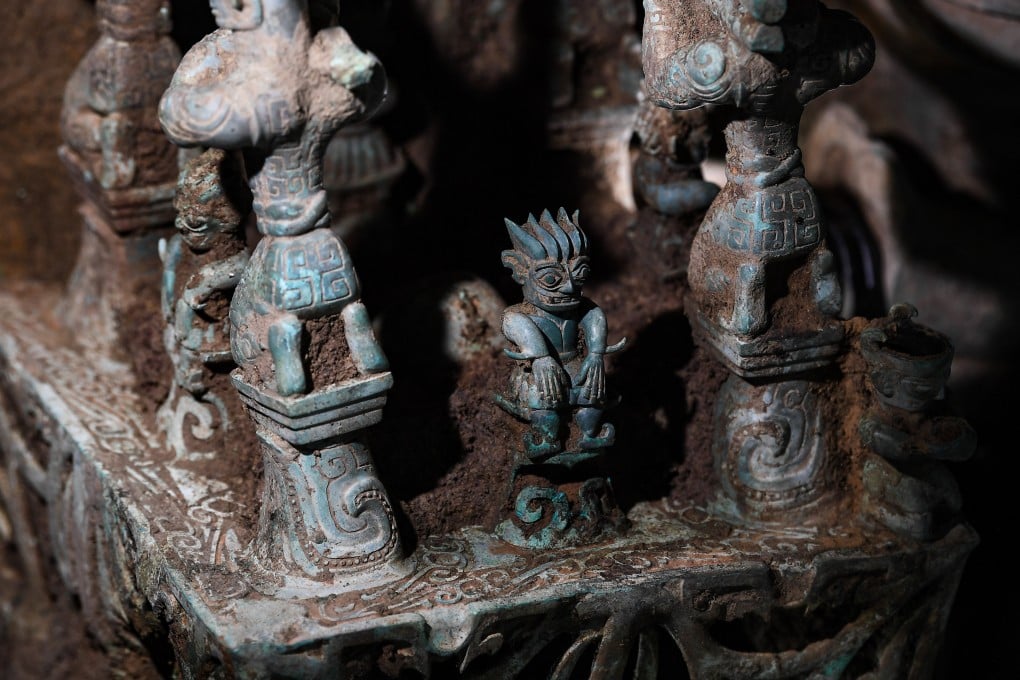Advertisement
Sanxingdui Ruins: treasure trove of 13,000 ancient artefacts sheds light on mysterious Chinese kingdom
- Thousands of artefacts found in sacrificial pits help date what is believed to be a centre of the Shu Kingdom
- The items include ‘complex and imaginative’ sculptural works
Reading Time:2 minutes
Why you can trust SCMP
18

Chinese archaeologists have unearthed a trove of mysterious artefacts in the country’s southwest believed to shed light on a culture more than 3,000 years ago that never made it into the official historical record.
The finds were discovered in six sacrificial pits at the Sanxingdui Ruins site in Sichuan province and include a bronze box containing a green jade.
The box, with four dragon head handles and a few streamers, was likely wrapped in silk when offered as a sacrifice, according to state news agency Xinhua.
Advertisement
But nobody knows what it is.

Li Haichao, a professor at Sichuan University who is in charge of an excavation team, said the discovery was groundbreaking.
Advertisement
Advertisement
Select Voice
Choose your listening speed
Get through articles 2x faster
1.25x
250 WPM
Slow
Average
Fast
1.25x